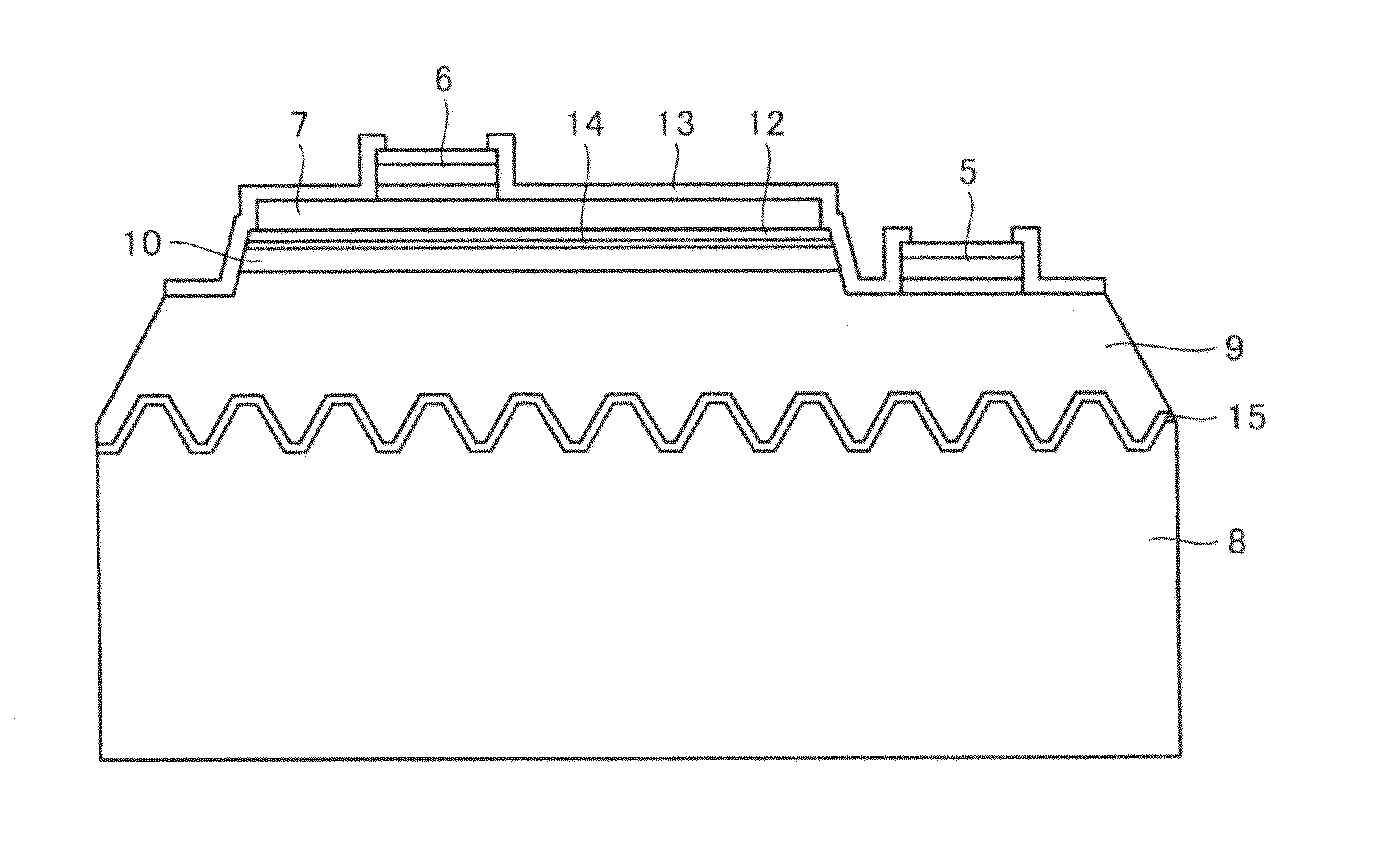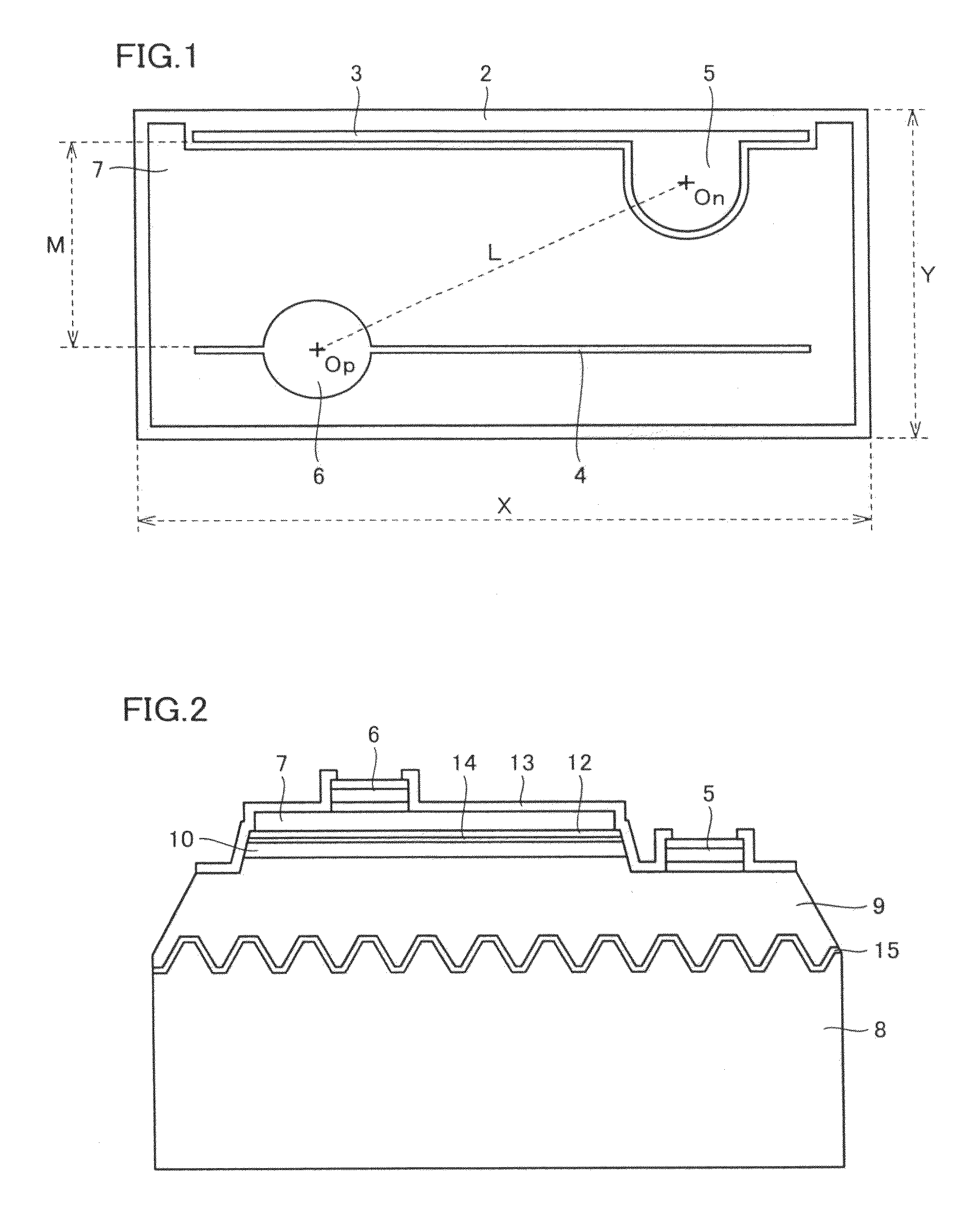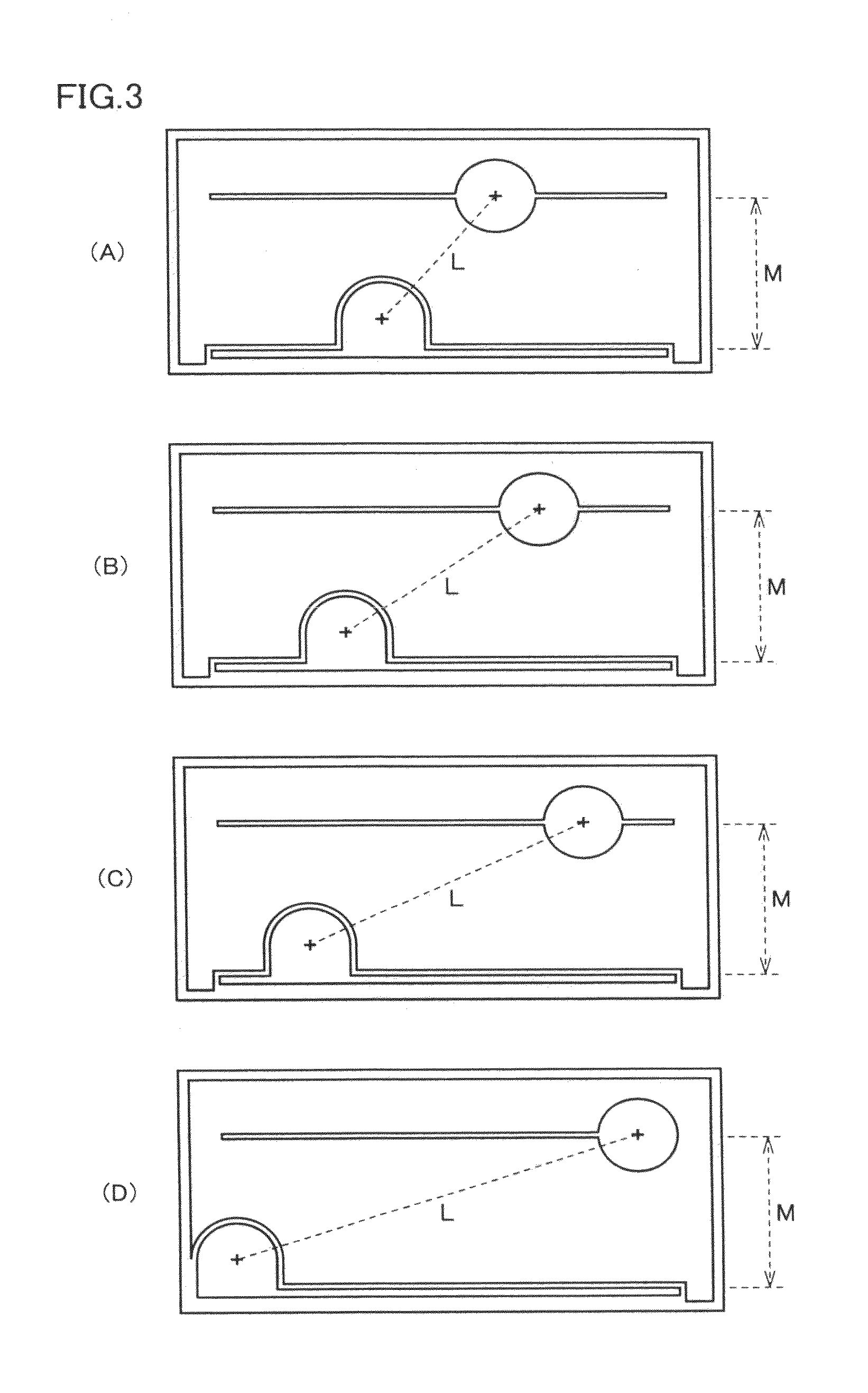Nitride semiconductor light-emitting device
a light-emitting device and semiconductor technology, applied in the direction of semiconductor devices, basic electric elements, electrical appliances, etc., can solve the problems of degrading the uniformity of light emission, insufficient current diffusion function, and current constriction, so as to improve the current diffusion efficiency, reduce the operation voltage, and improve the effect of light emission uniformity
- Summary
- Abstract
- Description
- Claims
- Application Information
AI Technical Summary
Benefits of technology
Problems solved by technology
Method used
Image
Examples
embodiment 1
[0046]A light-emitting device similar to that schematically illustrated in FIGS. 1 and 2 is produced in Embodiment 1 of the present invention. FIG. 3(A) shows a schematic plan view of the light-emitting device according to this Embodiment 1.
[0047]In the light-emitting device of Embodiment 1, as schematically shown in FIG. 2, an n-type nitride semiconductor layer 9 was deposited on a sapphire substrate 8 having a main surface of a (0001) plane orientation with an intervening AlN buffer layer 15 therebetween. This n-type semiconductor layer 9 includes a GaN underlayer of 9 μm thickness and Si-doped n-type GaN contact layer of 2 μm thickness (carrier concentration: about 6×1018 cm−3) deposited at a substrate temperature of about 1000° C.
[0048]A nitride semiconductor active layer 10 was deposited on n-type semiconductor layer 9. This active layer 10 has a multi-quantum-well structure in which an n-type In0.15Ga0.85N quantum-well layer of 3.5 nm thickness and an Si-doped GaN barrier laye...
embodiment 2
[0057]A light-emitting device according to Embodiment 2 of the present invention is schematically shown in a plan view of FIG. 3(B). The light-emitting device of this Embodiment 2 is different from Embodiment 1 only in that the ratio of M / L was reduced to 0.7, where M represents the distance between the branch electrodes and L represents the distance between the centers of the p-side and n-side electrodes pads. The change of the M / L value in the case of Embodiments 1 and 2 can clearly be seen in comparison between FIG. 3(A) and FIG. 3(B). As clearly seen in FIGS. 6(B) and 6(C), optical output Po (mW) and power efficiency WPE (%) of the light-emitting device of Embodiment 2 (M / L=0.7) are highest in the case that the light-emitting device is operated with current of 100 mA (current density>90 A / cm2; current injection area: 1.10×10−3cm2).
embodiment 3
[0058]A light-emitting device according to Embodiment 3 of the present invention is schematically shown in a plan view of FIG. 3(C). The light-emitting device of this Embodiment 3 is different from the other Embodiments only in that the ratio of M / L was further reduced to 0.5, where M represents the distance between the branch electrodes and L represents the distance between the centers of the p-side and n-side electrodes pads.
[0059]FIG. 7 shows photographs of light emission states of the light-emitting devices taken by a CCD camera (HAMAMATU C8000-20). Although the photographs attached hereto are shown as grayscale images, the original photographs are color images in which red, orange, yellow, green, powder blue, blue, and navy blue having different light wavelengths sequentially appear depending on an area emitting high intensity light to an area emitting low intensity light. When such a color photograph is converted to a black-and-white photograph, an area of green having an inte...
PUM
 Login to View More
Login to View More Abstract
Description
Claims
Application Information
 Login to View More
Login to View More - R&D
- Intellectual Property
- Life Sciences
- Materials
- Tech Scout
- Unparalleled Data Quality
- Higher Quality Content
- 60% Fewer Hallucinations
Browse by: Latest US Patents, China's latest patents, Technical Efficacy Thesaurus, Application Domain, Technology Topic, Popular Technical Reports.
© 2025 PatSnap. All rights reserved.Legal|Privacy policy|Modern Slavery Act Transparency Statement|Sitemap|About US| Contact US: help@patsnap.com



